Discover 9 hidden attractions, cool sights, and unusual things to do in Kinshasa (Democratic Republic of the Congo). Don't miss out on these must-see attractions: National Museum of the Democratic Republic of Congo, Lola ya Bonobo, and Académie des Beaux-Arts. Also, be sure to include Palais du Peuple in your itinerary.
Below, you can find the list of the most amazing places you should visit in Kinshasa (Kinshasa).
Table of Contents
National Museum of the Democratic Republic of Congo
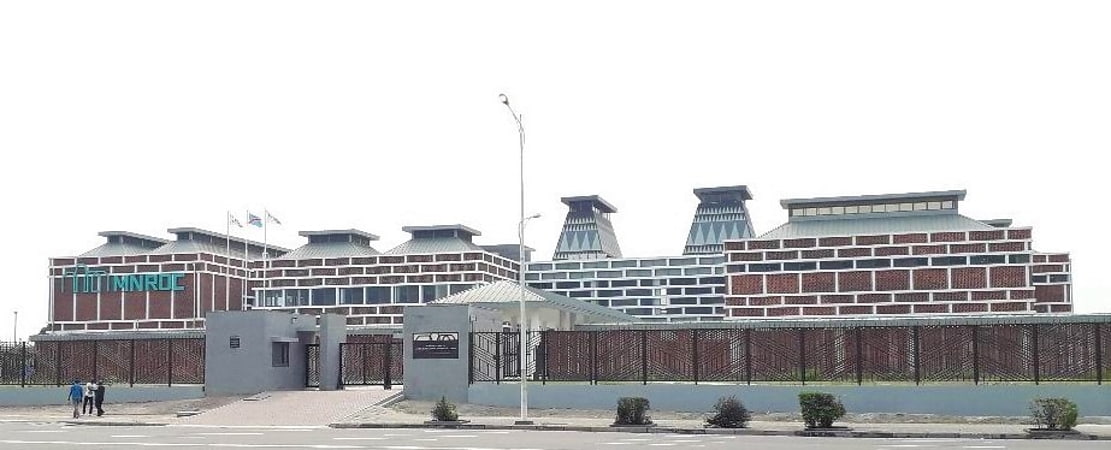
The National Museum of the Democratic Republic of Congo or MNRDC is a museum for the cultural history of the numerous ethnic groups and historical epochs of the Democratic Republic of the Congo in the capital Kinshasa. It was officially handed over to the Congolese government by representatives of the Republic of Korea in June 2019.
The construction cost of US-$21 million was funded by the Korean Agency for Cooperation (KOICA). The building was built after a construction period of 33 months in cooperation between experts of the DR Congo and the Republic of Korea under modern aspects (locally available construction materials, use of solar energy, natural air circulation with only partial use of air conditioning, etc.) and represents the largest cultural policy investment of South Korea in Central Africa to date.
In three public exhibition halls of 6,000 m2, 12,000 objects can be presented in their cultural context. The majority of the holdings of the National Institute of Museums (Institut des Musées Nationaux du Congo), however, must be stored in depots. Unlike in the past, when the director and scientific cooperation had been provided for decades by Belgian scientists from the Africa Museum in Brussels, Congolese experts have now been trained in South Korea. Thus, the Congolese cultural politicians have put their international cooperation on a broader basis than before.
The museum was opened to the public on 23 November 2019 by the President of the DR Congo, Félix Tshisekedi. Referring to requests for the resitution of African cultural heritage from museums in Europe, Tshisekedi said: "We support the return of the scattered cultural heritage, especially in Belgium. The idea is there, but it needs to be done gradually. Of course it is a Congolese heritage, one day it will be necessary that this heritage is returned, but it has to be done in an organized way. It requires means for the upkeep. One thing is to ask for their return, but another is to conserve it."[1]
Lola ya Bonobo
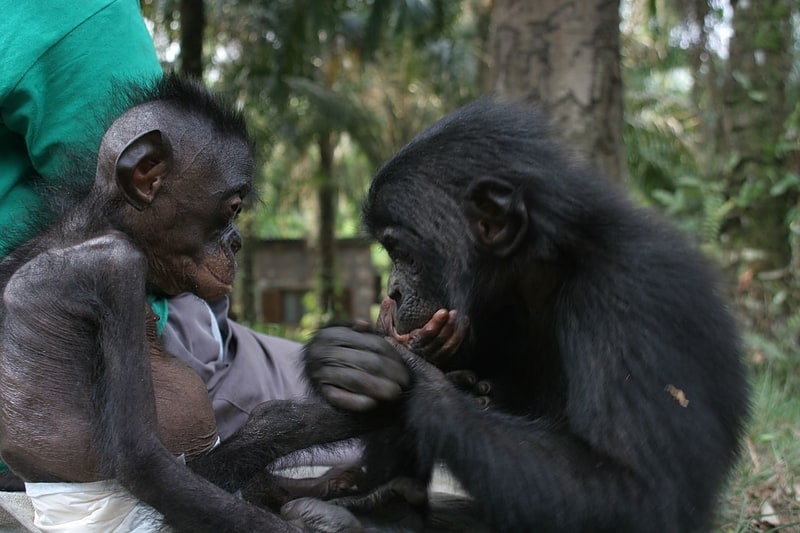
Animal park in Kinshasa, Democratic Republic of the Congo. Founded by Claudine André in 1994, Lola ya Bonobo is the world's only sanctuary for orphaned bonobos. Since 2002, the sanctuary has been located just south of the suburb of Kimwenza at the Petites Chutes de la Lukaya, Kinshasa, in the Democratic Republic of the Congo.
Lola ya Bonobo means 'paradise for bonobos' in Lingala, the main language of Kinshasa. Lola ya Bonobo is home to about 60 bonobos who live in 30 hectares of primary forest.
Lola ya Bonobo is a member of the Pan African Sanctuary Alliance.
Typically, bonobos arrive as young infants. The bushmeat trade in the Congo area sees hundreds of bonobos killed each year for meat. The infants are sold as pets. When confiscated, these young bonobos are taken to Lola ya Bonobo. They start a new life at the sanctuary with close care from a substitute human mother, but are usually quickly ready to be integrated into a peer group, and shortly afterwards into one of the large, mixed-age social groups.
Although the bonobos are captive, they live in an environment similar to the wild. They can forage among dozens of edible plants and fruiting trees, compete for mating opportunities, and learn to avoid dangers such as stepping on venomous snakes just as they would in the wild. As a result, the bonobos at the Lola ya Bonobo sanctuary, living in their forested microcosm, show all the naturally occurring behaviors observed in wild bonobos.
Because of the living conditions provided, the sanctuary can play a critical role by demonstrating the level of humane treatment that captive apes deserve. The sanctuary also protects wild bonobos since it triggers the enforcement of domestic and international conservation laws aimed at preventing the trade in live bonobos. The sanctuary also acts as a mouthpiece for conservation efforts in DRC by educating thousands of Congolese visitors each year about the value of Congo's natural history, in particular the bonobo – their unique Congolese inheritance.[2]
Académie des Beaux-Arts
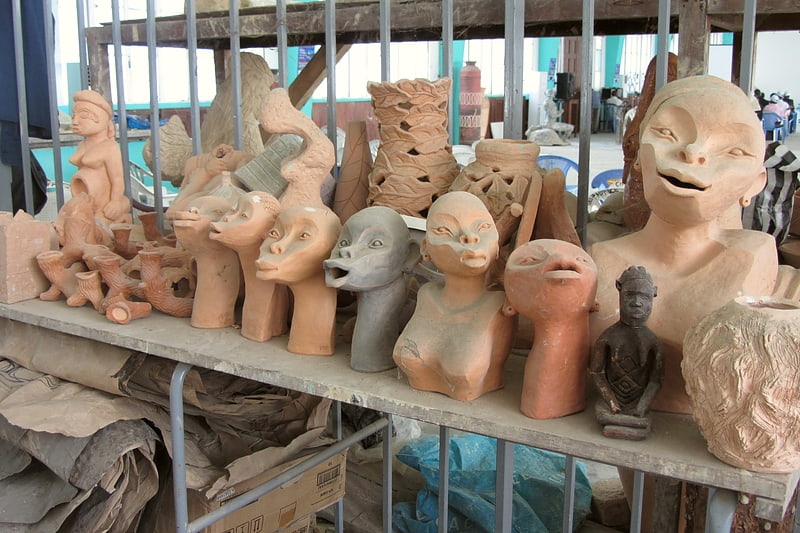
Also known as: Académie des beaux-arts de Kinshasa
School in Kinshasa, Democratic Republic of the Congo. The Académie des Beaux-Arts is a school in Kinshasa, Democratic Republic of the Congo. The school is devoted to teaching the arts, and was founded in 1943 as the École Saint-Luc à Gombe Matadi by Belgian catholic missionary Marc Wallenda. In 1949 the school moved to present-day Kinshasa and in 1957 it was renamed as the Académie des Beaux-Arts. During the education reforms of 1981 the school was integrated into the national technical university system.
The school offers programs in metalworking, interior decorating, visual communications, sculpture, painting, et cetera.[3]
Address: 8249, Avenue du 24 novembre, Gombe, Kinshasa, République Démocratique du Congo, Kinshasa
Palais du Peuple
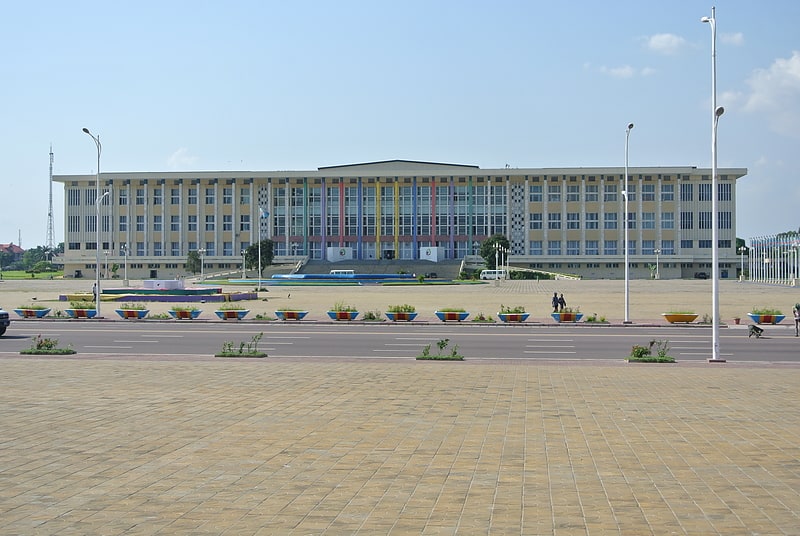
Government office in Kinshasa, Democratic Republic of the Congo. The People's Palace or Palace of the People is the seat of the National Assembly and Senate in Kinshasa, Democratic Republic of Congo, formerly Zaire. It was completed in 1979 with a line of credit from the People's Republic of China.[4]
Kinshasa Democratic Republic of the Congo Temple
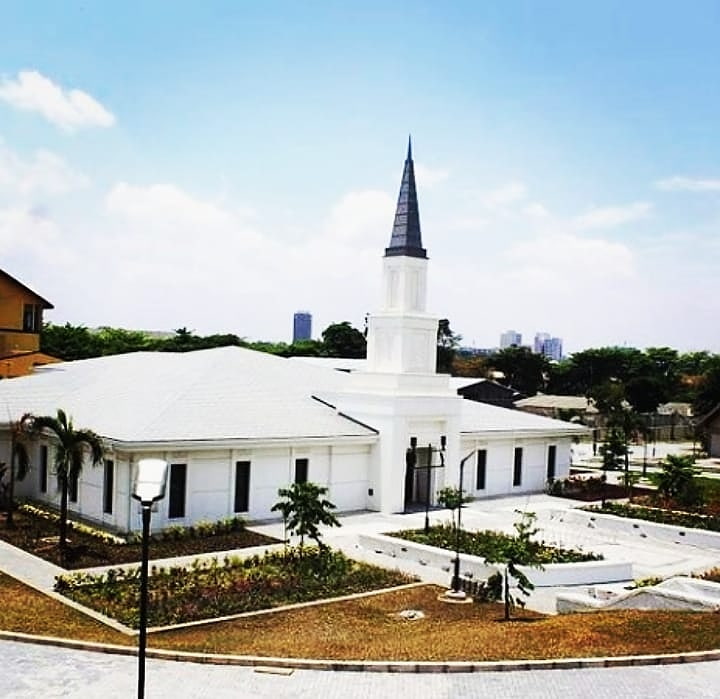
Education center in Kinshasa, Democratic Republic of the Congo. The Kinshasa Democratic Republic of the Congo Temple is a temple of The Church of Jesus Christ of Latter-day Saints in Kinshasa, Democratic Republic of the Congo. The intent to construct the temple was announced by church president Thomas S. Monson on 1 October 2011.[5]
Palais de la Nation
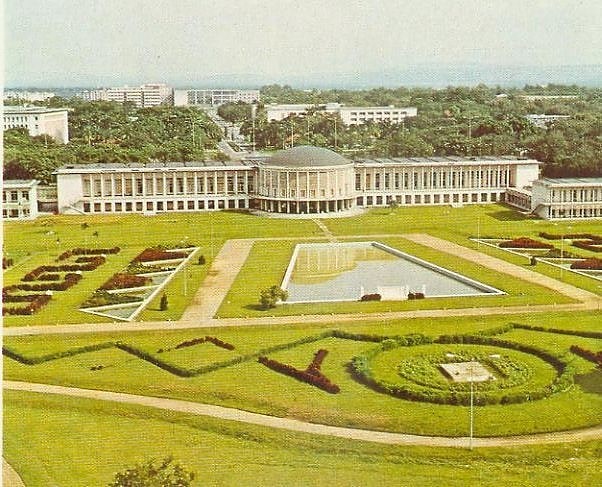
Building in Kinshasa, Democratic Republic of the Congo. The Palais de la Nation is a building in Gombe, Kinshasa, which since 2001 serves as the official residence of the President of the Democratic Republic of the Congo. The palais was built in 1956 to a design by Marcel Lambrichs, as the official residence of the colonial Governor-General. It is located in the north of Kinshasa, on the banks of the Congo River.
After Congolese independence from Belgium in 1960, the Palais became a symbol of the new state. The official ceremonies surrounding independence, including King Baudoin's Proclamation, declaring the Congo's independence and Patrice Lumumba's speech denouncing colonialism, took place in the palais on 30 June. It briefly served as the seat of the Congolese parliament, now based in the Palais du Peuple, after independence.
Following the restoration of the Congo after the fall of Mobutu Sese Seko, the mausoleum of Laurent-Désiré Kabila was built in front of the palace.[6]
Université de Kinshasa

Public university in Kinshasa, Democratic Republic of the Congo. The University of Kinshasa, commonly known as UNIKIN, is one of the three major universities in the Democratic Republic of the Congo, together with the University of Kisangani and University of Lubumbashi. Originally founded in 1954 as Lovanium University during Belgian colonial rule, the current university was established following the division of the National University of Zaire in 1981. It is located in Kinshasa.
The university had an enrollment of 29,554 and a faculty and research staff of 1,929 in the 2018–2019 academic year, and currently has twelve academic divisions.[7]
Address: Universite de kinshasa, Kinshasa
Mont Amba District
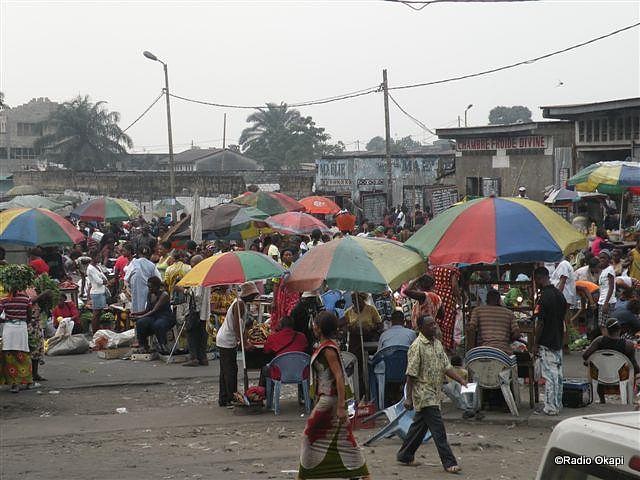
Also known as: Mont-Amba
Mont Amba is an area of the capital city of Kinshasa, Democratic Republic of the Congo, comprising five of the city-province's twenty-four administrative divisions—the communes of Kisenso, Lemba, Limete, Matete and Ngaba. It is one of the four so-called districts of Kinshasa. These were the administrative divisions of Kinshasa during much of the Mobutu years and around which a number of government systems and services are still organized. For instance, Mont Amba makes up an eleven-member National Assembly constituency designated as Kinshasa III. However, these districts are not part of Congo's territorial organization.
Mont Amba takes its name from the hill in its extreme southwest on which the main campus of the University of Kinshasa is situated. Its western border rises from there to the Congo river east of the downtown district. It is separated from the Tshangu District further to the east by the Ndjili River.
Mont Amba is home to several parts of the University of Kinshasa, including the regional center for nuclear research. As of March 2011, the reactor at this center had not been operational for several years. The Mont Amba Medical Center in Lemba is a teaching hospital for the university. In June 2011 the first plastic surgery clinic in the DRC was opened at the hospital, primarily for the treatment of children who had been burned.[8]
Lukunga District
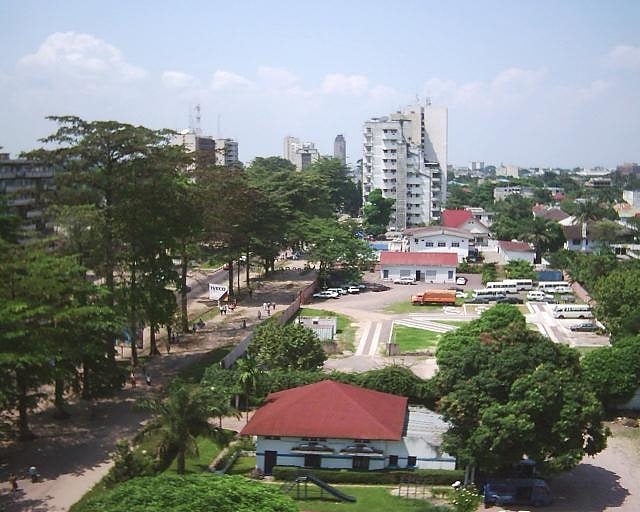
Also known as: Lukunga
Lukunga is an area of the capital city of Kinshasa, Democratic Republic of the Congo, comprising seven of the city-province's twenty-four administrative divisions—the communes of Barumbu, Gombe, Kinshasa, Kintambo, Lingwala, Mont Ngafula and Ngaliema. It is one of the four so-called districts of Kinshasa. These were the administrative divisions of Kinshasa during much of the Mobutu years and around which a number of government systems and services are still organized. For instance, Lukunga makes up a fourteen-member National Assembly constituency designated as Kinshasa I. However, these districts are not part of Congo's territorial organization.
The district takes its name from the Lukunga River. This is a critical source of water for the district, compromised by silting.[9]